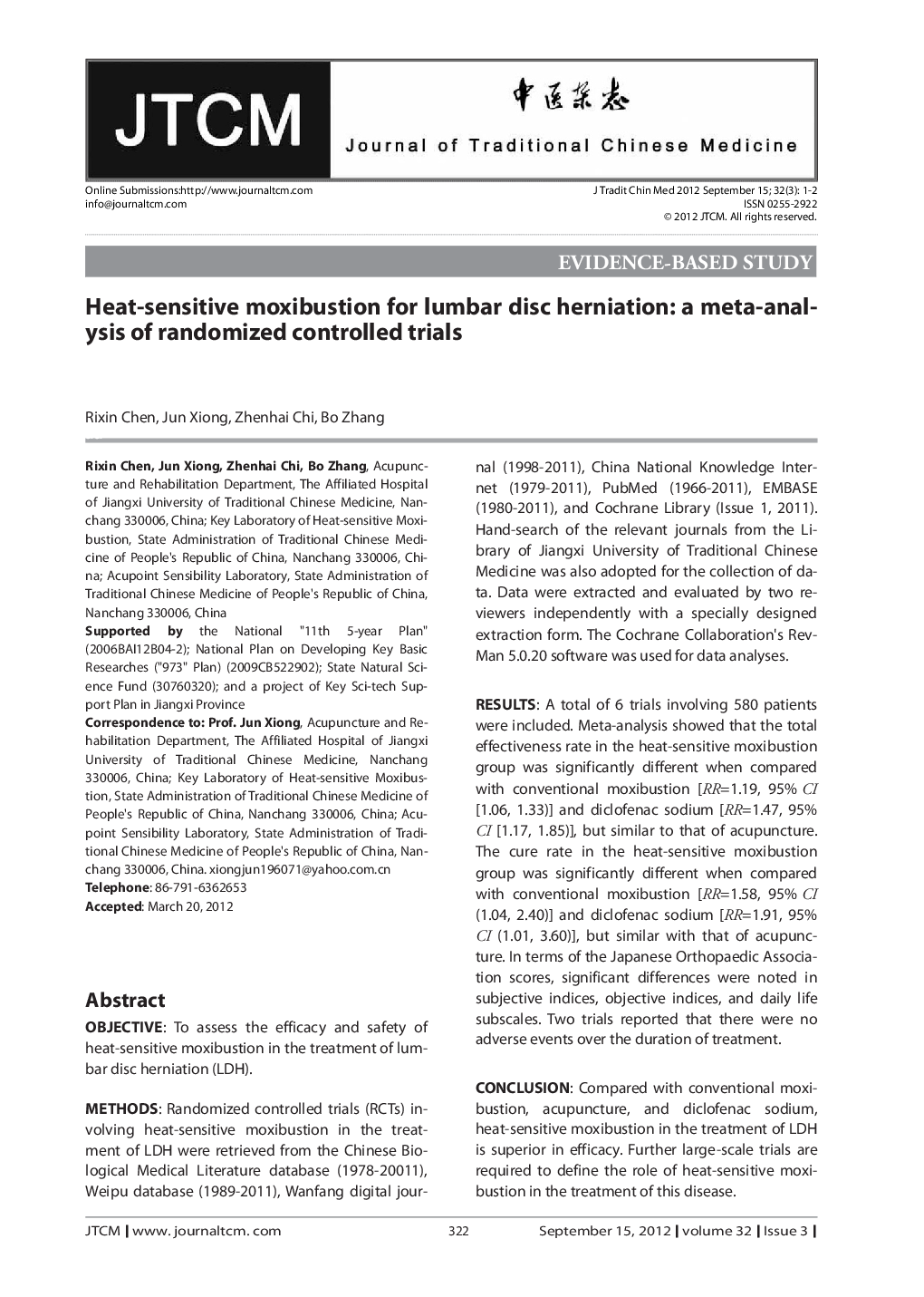| Article ID | Journal | Published Year | Pages | File Type |
|---|---|---|---|---|
| 4200965 | Journal of Traditional Chinese Medicine | 2012 | 7 Pages |
ObjectiveTo assess the efficacy and safety of heat-sensitive moxibustion in the treatment of lumbar disc herniation (LDH).MethodsRandomized controlled trials (RCTs) involving heat-sensitive moxibustion in the treatment of LDH were retrieved from the Chinese Biological Medical Literature database (1978–20011), Weipu database (1989–2011), Wanfang digital journal (1998–2011), China National Knowledge Internet (1979–2011), PubMed (1966–2011), EMBASE (1980–2011), and Cochrane Library (Issue 1, 2011). Hand-search of the relevant journals from the Library of Jiangxi University of Traditional Chinese Medicine was also adopted for the collection of data. Data were extracted and evaluated by two reviewers independently with a specially designed extraction form. The Cochrane Collaboration's Rev-Man 5.0.20 software was used for data analyses.ResultsA total of 6 trials involving 580 patients were included. Meta-analysis showed that the total effectiveness rate in the heat-sensitive moxibustion group was significantly different when compared with conventional moxibustion [RR=1.19, 95% CI [1.06, 1.33)] and diclofenac sodium [RR=1.47, 95% CI [1.17, 1.85)], but similar to that of acupuncture. The cure rate in the heat-sensitive moxibustion group was significantly different when compared with conventional moxibustion [RR=1.58, 95% CI (1.04, 2.40)] and diclofenac sodium [RR=1.91, 95% CI (1.01, 3.60)], but similar with that of acupuncture. In terms of the Japanese Orthopaedic Association scores, significant differences were noted in subjective indices, objective indices, and daily life subscales. Two trials reported that there were no adverse events over the duration of treatment.ConclusionCompared with conventional moxibustion, acupuncture, and diclofenac sodium, heat-sensitive moxibustion in the treatment of LDH is superior in efficacy. Further large-scale trials are required to define the role of heat-sensitive moxibustion in the treatment of this disease.
